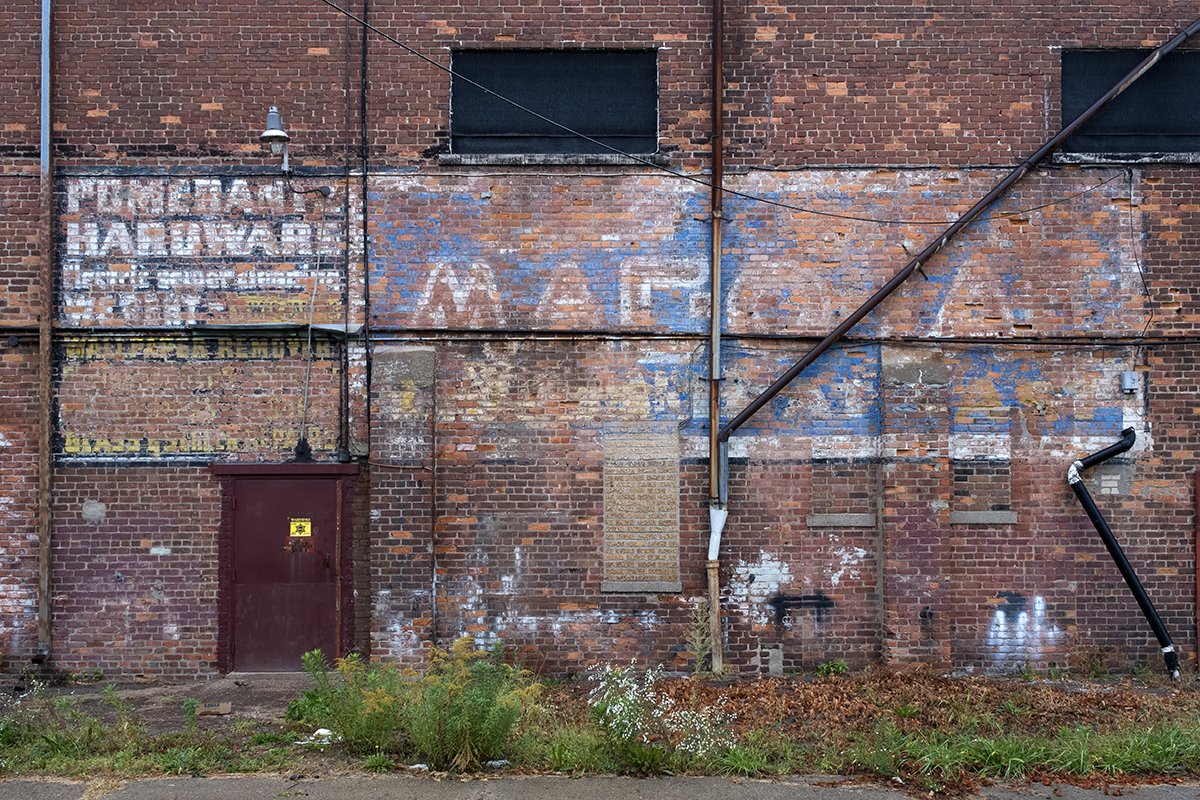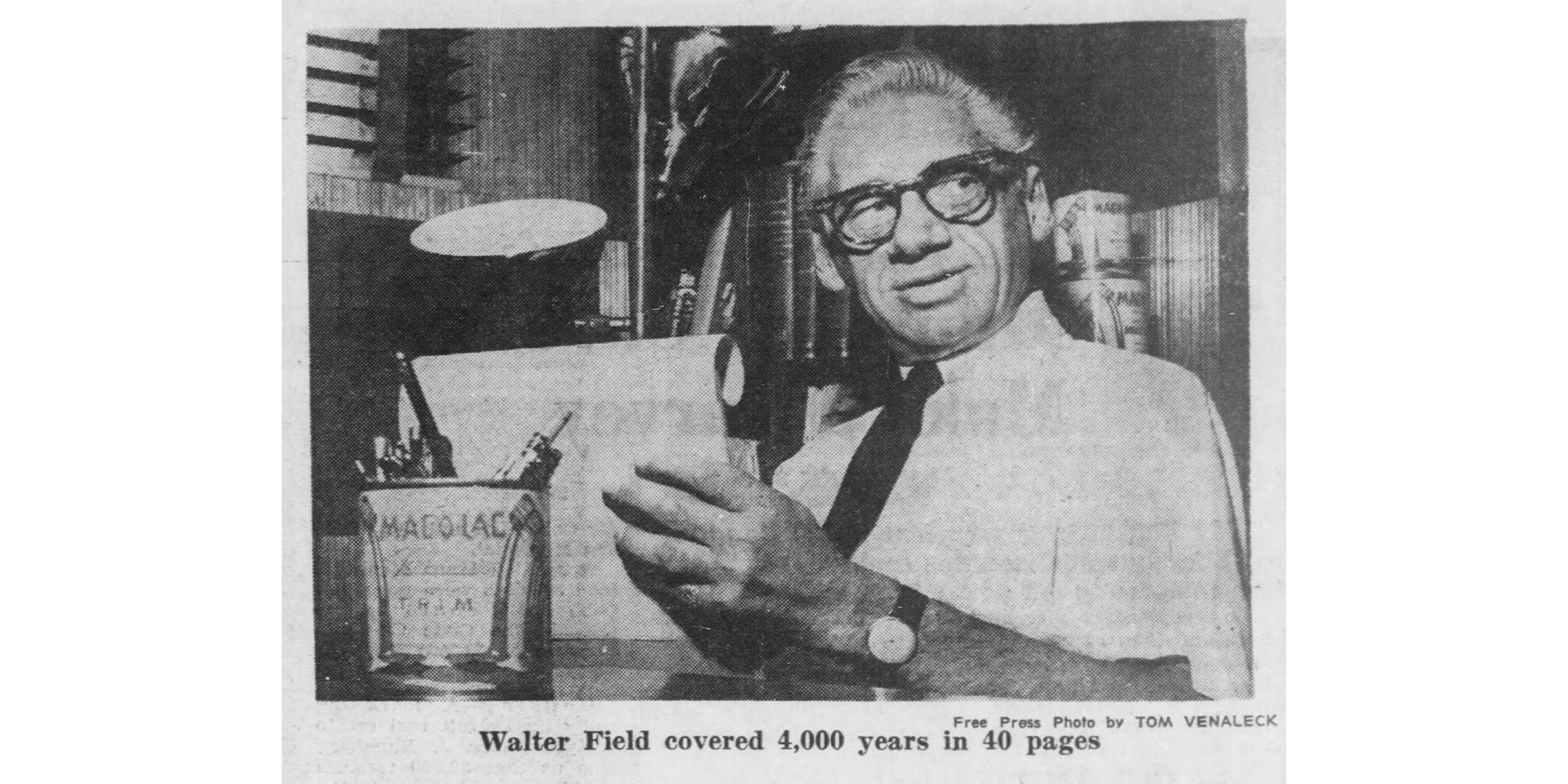The History of Mac-O-Lac Paints | Detroit, MI
If you’ve driven around Detroit, you’ve probably seen a sign for Mac-O-Lac paint. It was a popular hardware product in Detroit for decades, and many hardware stores still have their branding to attract customers.
Gratiot Hardware, 6844 Gratiot Avenue
I’ve seen a few Mac-O-Lac signs over the years, but this ghost sign off Gratiot Avenue is one of my favorites. Despite its popularity, there isn’t much information about the brand online, so I did a little digging.
Mac-O-Lac was founded by Walter L. Field, an immigrant from Poland. Field was born in 1901, immigrated to the States at 18, and began working in construction. However, shortly after his arrival, the Great Depression struck the city, and a lack of capital struck down the building business. Field realized that instead of building, people wanted to care for what they had, so he went into the varnish business.
Mondry Hardware, 6657 Michigan Avenue
After five years in the business, Field purchased the Michael McNamara Varnish Works factory, a company established in Hamtramck in 1872. The factory was on Clark Avenue at the Michigan Central Rail Road line. In 1929, the facility was composed of five buildings and several acres. After purchasing the factory, Field founded Mac-O-Lac Paint and Varnish Works. These products would become incredibly popular around Detroit, across Michigan, and in a few places in the Midwest.
Detroit Free Press, 1910
In this era, every region and city had its local products in nearly every category. Today, we see remnants of this with brands like Better Made Chips and Faygo, but big box stores and name-brand goods have eliminated a lot of localized household goods from the shelves at the hardware store.
Mac-O-Lac Paint and Varnish Works was a successful company, enabling Field and his family to thrive. Walter married Lea Damsky in 1929, and in the 1930s and 1940s, they lived on Cherrylawn Avenue. They had a daughter, Harriet, and a son, Irwin. The family was Jewish and was active in various community groups.
Gratiot Hardware, 6844 Gratiot Avenue
Field was involved with the Detroit Zionist District, Jewish Historical Society of Michigan, Jewish Publication Society, and Michigan Tuberculosis Society, was inducted into the Senior Adult Jewish Hall of Fame, was one of the founders of the Jewish News, and started the Cultural Commission for Congregation Shaarey Zedek.
Detroit Free Press, 1963
An article in the Detroit Free Press in 1963 spoke about his dabbles in the arts, and he’d go on to write numerous books. The piece described him as a paint manufacturer, poet, businessman, bard, and historian. By the 1960s, Mac-O-Lac Paints had 300 dealers, which was no small feat.
Field would sell Mac-O-Lac Paint and Varnish Works in 1974 and retire. At some point prior, he operated New Mexico Paints, too. He died in 1999 at age 98.
McDougall Hardware, 5701 McDougall Street
The last adverts for Mac-O-Lac that I’ve found are from 1994. There was a Mac-A-Lac Paints, Inc., formerly Republic Powdered Metals of Michigan, Inc., later Cal-O-Cam, Inc., but it went belly up in 1985. There’s a chance that distributors were still marketing and selling the name into the 1990s, as paints can last a decade or longer, depending on the base.
Field’s wife, Lea, died in 2004.
Gratiot Hardware, 6844 Gratiot Avenue
In 2023, numerous hardware stores, operational and vacant, still had Mac-O-Lac branding on the wall. Within another decade or two, there won’t be much trace of Mac-O-Lac Paints left in Detroit. The ghost signs fade more every year, structures change signage, and old hardware stores are renovated. Still, the story of the Field family is a positive one. When the going gets tough, start making varnish.
To learn more about Detroit’s historic buildings, businesses, and people, check out my Historically Significant Interactive Map to explore the Motor City and the locations that I’ve documented! Thanks for reading!







